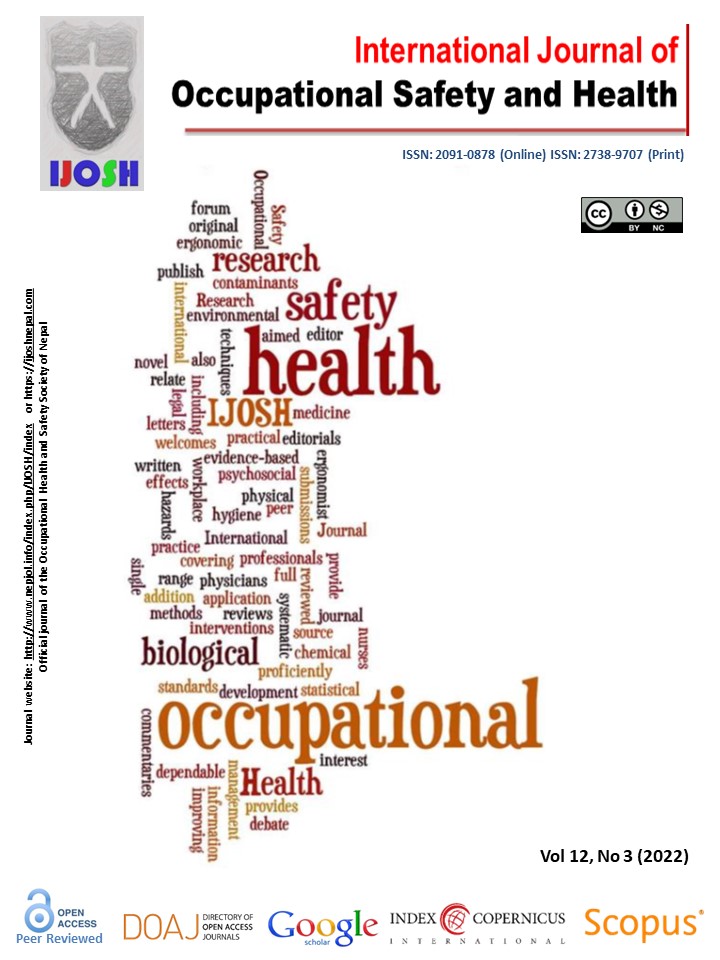A Review on Residual Solid Propellant Disposal Methods Using HRIM, RISK Score Matrix, Safety Consequence Analysis and Environmental Impact Analysis
DOI:
https://doi.org/10.3126/ijosh.v12i3.41375Keywords:
Open air burning, Residual solid propellants, Disposal methods, Risk Score Matrix, Preliminary Hazard AnalysisAbstract
Introduction: Solid propellants are high energetic materials used for Launch vehicles and military applications. During solid propellant processing residual propellant generates due to less pot life, machining for insulation lining, scaled and sub scaled trials for mechanical and ballistic properties prediction. A conventional method for disposal of residual propellant is open-air burning; other alternate methods in the literature are incineration, wet air oxidation and molten salt destruction.
Methods: Hazard assessment is carried out for the disposal methods both conventional and alternate. Preliminary hazard analysis (PHA), Hazard Risk Index Matrix (HRIM), Risk Score Matrix and as low as reasonably practicable (ALARP) are used to assess the Hazard.
Results: Based on the study and calculations Open air burning is having less risk score and medium level safety risk acceptance and tolerable risk which can mitigate. Open-air burning is the safest, efficient and cost-effective way to dispose of the high energetic material but the disadvantage of this method is environmental pollution, high temperature and toxic gases exposure to fire personnel. Based on safety consequences analysis, the 1 gram of solid propellant is found to be 1.308 grams of Trinitrotoluene (TNT) equivalency, and one-time open burning creates 3.822 KPa overpressure on the atmosphere where minimum overpressure to create damage effect is 5 KPa.
Conclusion: The environmental impact analysis for disposing of solid propellant gives information about different pollutants, their concentrations in the atmosphere at different altitudes and their impact. Solid propellants are hazard reactive materials they were the one exception under the Resource Conservation and Recovery Act (RCRA) that controls the destruction of hazardous waste.
Downloads
Downloads
Published
How to Cite
Issue
Section
License
Copyright (c) 2022 Meikandan Megaraj, Nancy Grace N

This work is licensed under a Creative Commons Attribution-NonCommercial 4.0 International License.
This license enables reusers to distribute, remix, adapt, and build upon the material in any medium or format for noncommercial purposes only, and only so long as attribution is given to the creator.





